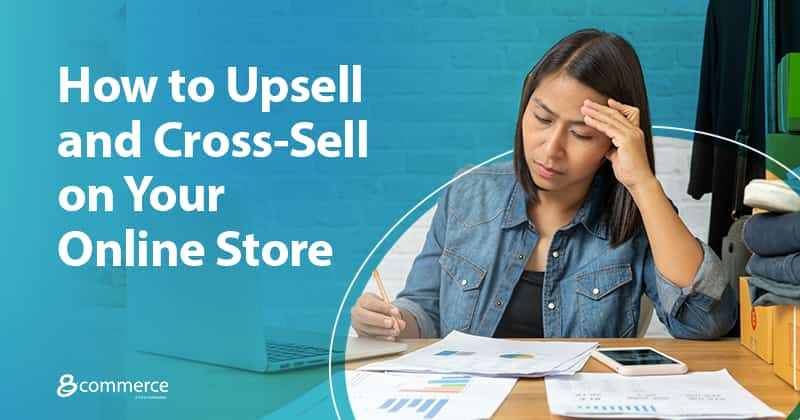Cross-selling and upselling increases your average order value, creating revenue and profit at very low incremental cost and most importantly build upon your relationships with your customers. Here you can learn more about these two fantastic techniques.
What is upselling and cross-selling?
Upselling is a technique to persuade customers to purchase a more expensive, upgraded, or premium version of a purchased item or other items for the purpose of making more sales. Upselling is based on selling to a customer who has already made a purchase rather than selling to a brand new one. Existing customers are also easier to speak to.
According to market research, the probability of selling to an existing customer is 60%-70%, compared to a 5%-20% probability of selling to a new customer. First-time buyers are 27% likely to return, but after their second or third purchase, this grows to 54%.
With strategic upselling, merchants can increase average order value (AOV). This is arguably the biggest benefit to introducing upsell. Adding upsells at strategic points in a customer journey can help grow order sizes. Not to mention, upselling also helps increase conversion rates. Because these post-purchase offers are targeted to your customer at a convenient point in their journey, buyer intent is high, so they’re more likely to complete the purchase.
The benefits also extend to the customer’s experience as well. By effectively upselling and cross-selling, you can make sure the customer chooses the right product for them and that they have everything they need to use that product. For example, batteries are a perfect cross-sell item for products that don’t come with their own. Not only would this increase the total order value, it also prevents the customer from receiving an item they can’t use immediately.
Upselling and cross-selling are commonly confused, but there is a key difference. While upselling focuses on increasing order value and encouraging a greater purchase, cross-selling involves making a recommendation adjacent to the original product. So, an upsell is more of an upgrade, whereas a cross-sell is a whole other purchase.
Let’s say a visitor is looking at purchasing a 13-inch mid-range laptop for Rp15,000,000. After selecting a laptop, the customer is immediately presented with several options for upgrading the processor. In this case, the merchant is trying to upsell the customer a more powerful (and expensive) computer. Essentially, they’re trying to get the customer to spend more on the same product or product type that they are currently looking at.
After the customer selects the processor upgrade, they proceed to the next screen, where they’re presented with the option to add a printer to their order. A printer is a logical accessory for many computer consumers, and since it’s related to the original product that the customer was interested in, it’s considered a cross-sell.
So, how do you upsell in a way that makes sense for your customers and the bottom line?
- Choose complementary products. Recommending products that complement products your customers have already purchased is one of the most common ways to upsell. The relevance makes it more likely that customers will be ready to make the purchase, as opposed to a random product recommendation.
- Discount products. Share discount coupons so customers can redeem them for their next purchase. Then showcase the items they could choose from.
- Free gift. If a customer opts for the upsell, offer a freebie in addition to the purchase. This gives an extra incentive, as customers get more for their money.
- Free samples. Small trials of a product can lead to larger purchases later on. Include free samples with every upsell purchase to incentivize conversions and raise awareness for other products.
Successful upselling and cross-selling will of course lead to increased sales. Now you just need to make sure that the last part of the journey, the product shipment, is as smooth. Thus, you need a capable and reliable fulfillment center.
At 8Commerce, we are experienced in navigating the complex (online) infrastructure of Indonesia. No matter the business size, we have the know-how to take you E-Commerce operations from market entry to full scale. Click on this link to learn more about our services and how we can work together to take your online business to next level.

